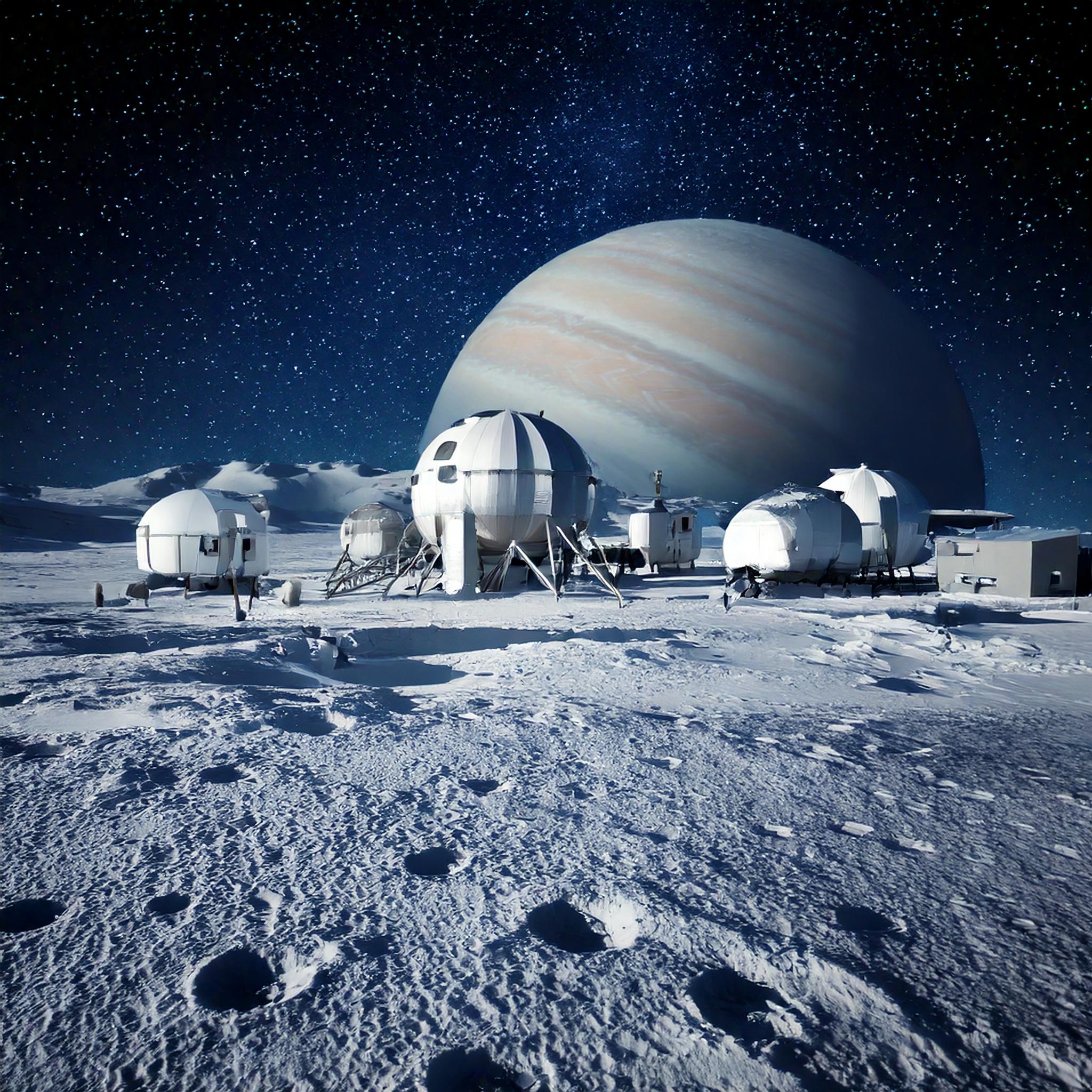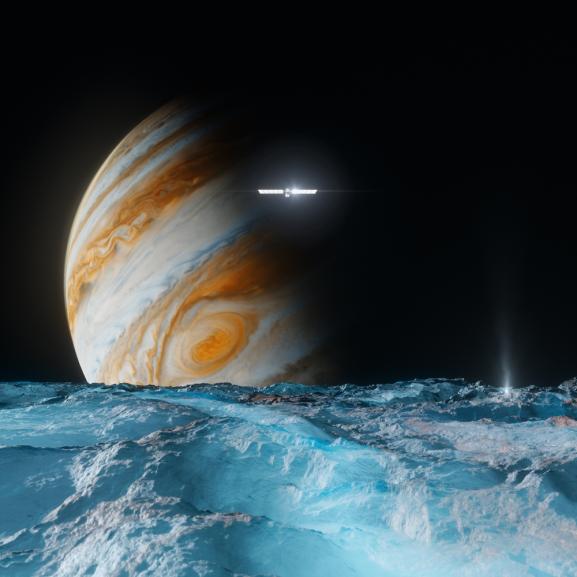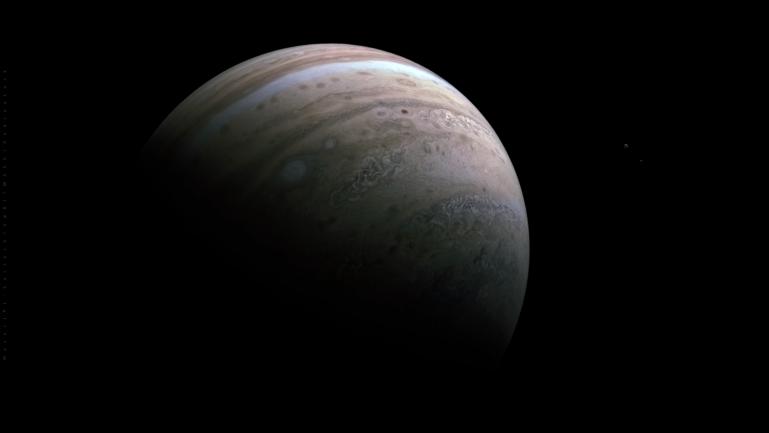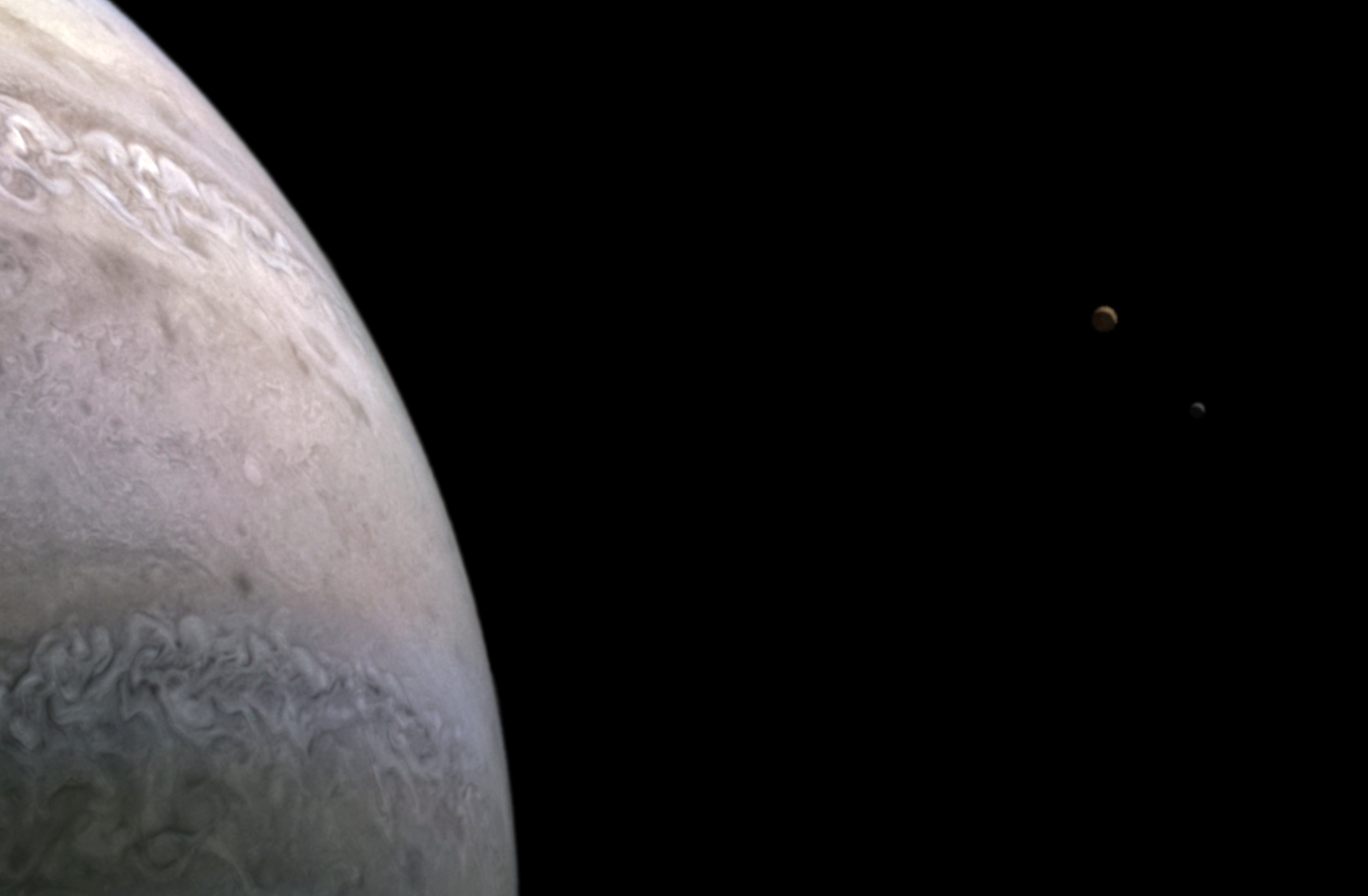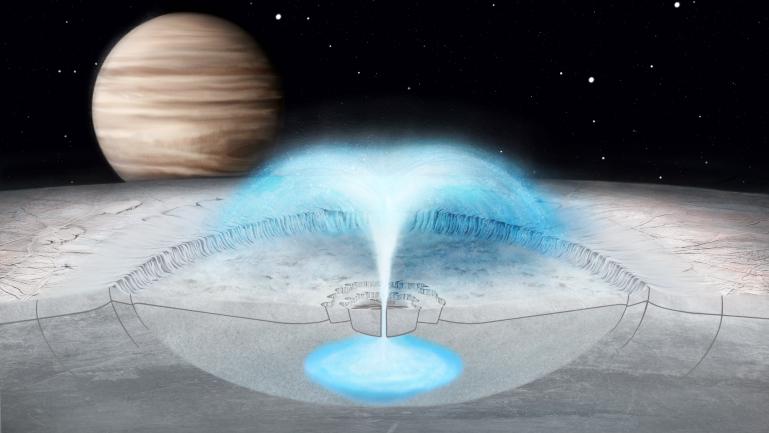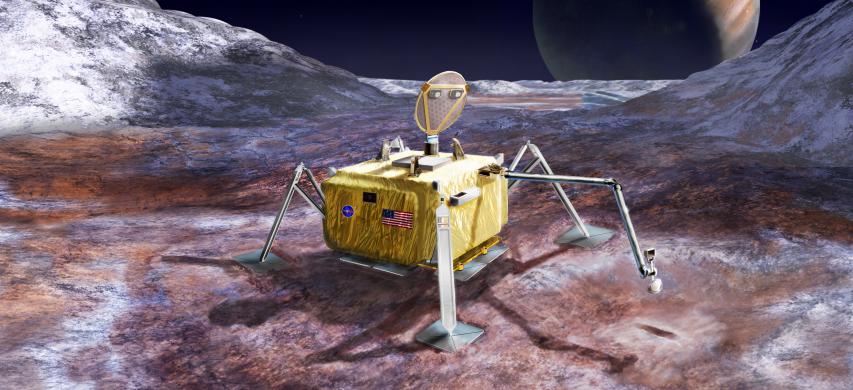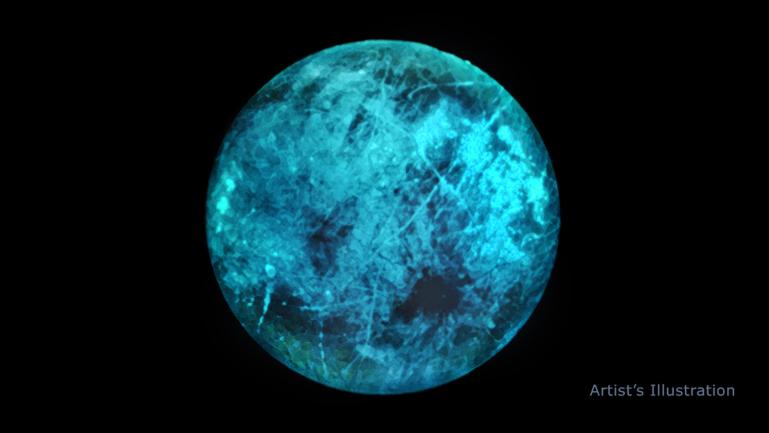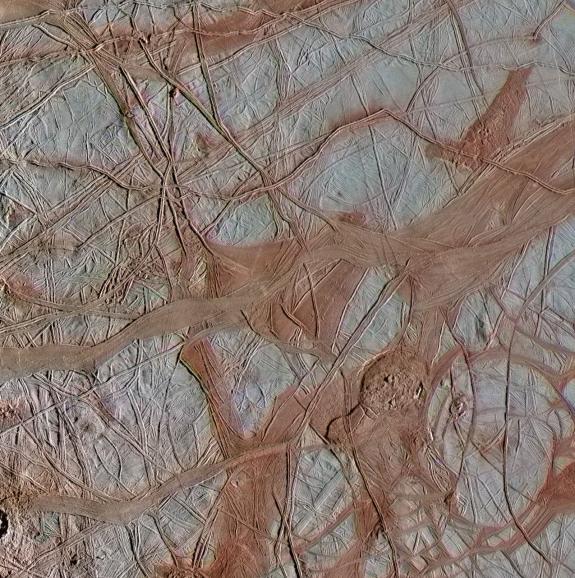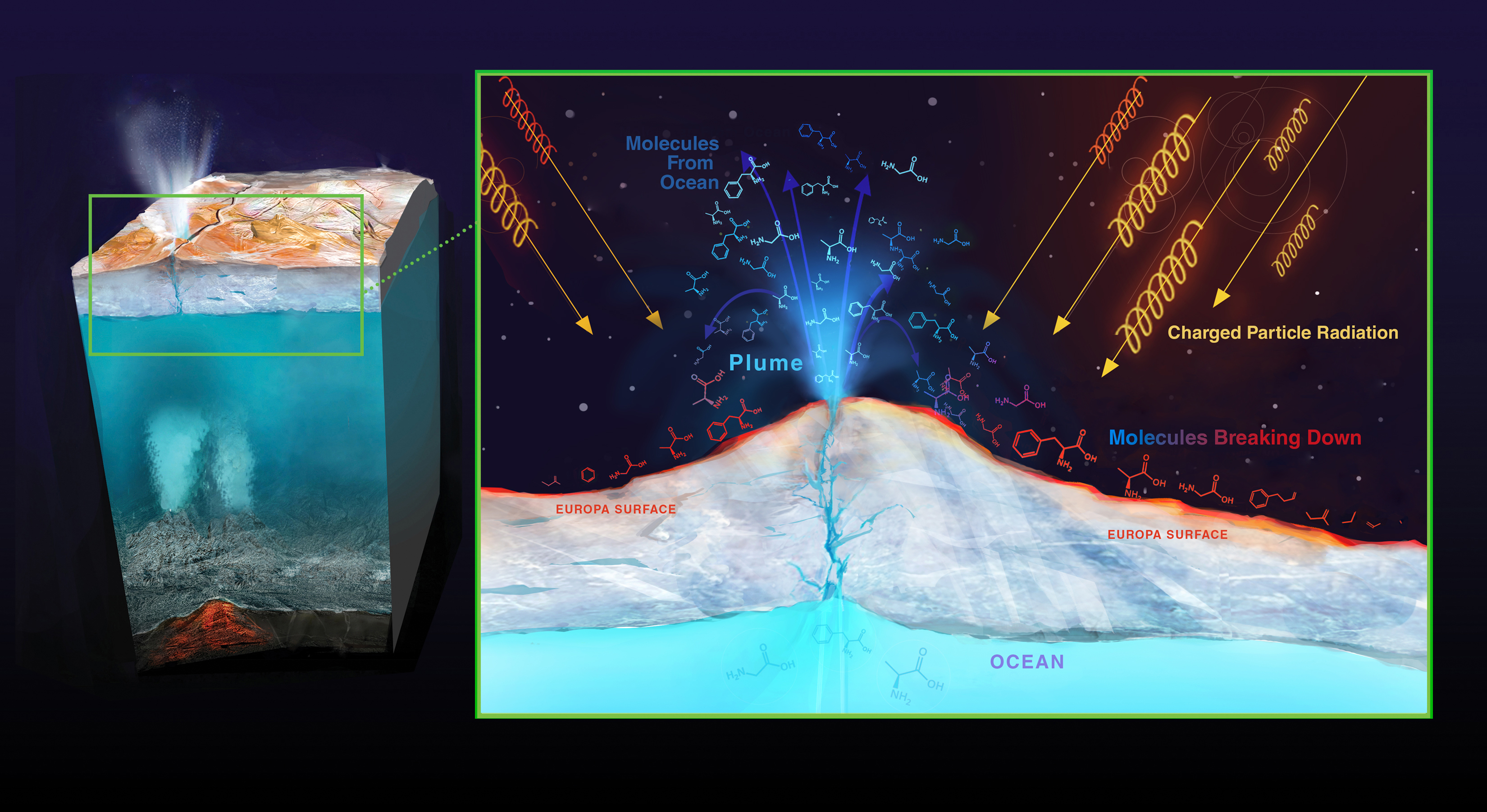Europa
Overview
| Location: | Europa orbits Jupiter at a distance of about 670,900 kilometers (417,000 miles). |
|---|---|
| Size: | 3,121 kilometers (1,940 miles) |
| Surface Temperature: | -160°C (-260°F) |
| Athmospheric Composition: | Oxygen (O2) |
| Athmospheric Pressure: | 0.1 μPa |
| Orbital Duration: | 3.55 Earth days to complete one orbit around Jupiter |
| Named After: | Europa (Consort of Zeus) from Greek Mythology |
| Remarks: | Europa is covered in an ocean that lies underneath a thick ice crust. The ice crust is estimated to be 10–30 kilometers (6–19 miles) thick. There is a high possibility for life beneath the ice. |
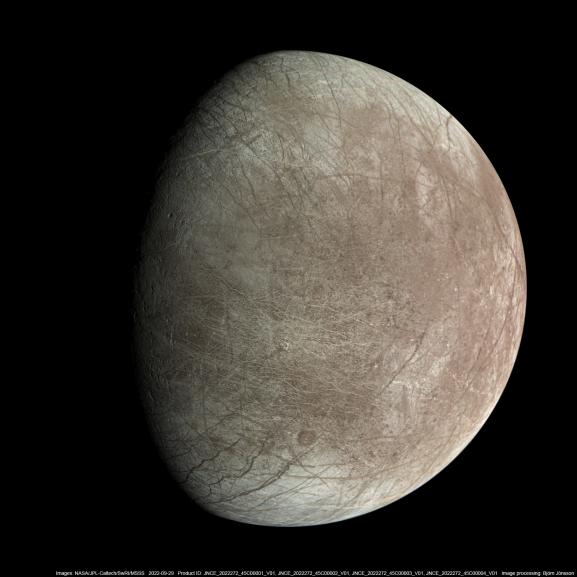
Overview
Europa, the second Galilean moon of Jupiter, is one of the most intriguing objects in our solar system. Discovered in 1610 by Galileo Galilei, Europa has captured the attention of scientists due to its unique features and potential for harboring life.
One of the most exciting aspects of Europa is the evidence for a global subsurface ocean beneath its icy crust. Observations from spacecraft like Galileo and the Hubble Space Telescope suggest that this ocean may contain more water than all of Earth's oceans combined. The ocean is thought to exist due to heat generated by tidal flexing, a process where gravitational interactions with Jupiter cause Europa’s interior to warm and maintain liquid water under the ice.
Europa’s subsurface ocean, coupled with the presence of essential elements such as oxygen and potential hydrothermal activity on its seafloor, makes it a prime candidate for extraterrestrial life. Scientists believe that if life exists, it might be microbial or similar to extremophiles found in Earth's deep oceans near hydrothermal vents.
Imagining a Colony on Europa
Establishing a human colony on Europa would be an extraordinary challenge, given its harsh environment. However, advances in technology and engineering could make it possible. A Europa colony would need to be a marvel of design, blending resilience with functionality to withstand the moon’s extreme conditions while supporting human life and scientific exploration.
Environmental Challenges
Europa presents a hostile environment for human habitation:
- Extreme Cold: (average surface temperature: -160°C/-260°F).
- Radiation: Jupiter’s powerful magnetic field bombards Europa with radiation, making the surface uninhabitable without heavy shielding.
- Thin Atmosphere: Europa's tenuous oxygen atmosphere is insufficient for breathing.
- Instability: Thick, unstable ice crust requiring advanced drilling and stabilization techniques.
Possible Colony Design
- Location and Structure A human settlement on Europa would likely be built beneath the ice to shield colonists from intense radiation from Jupiter. Modular, pressurized habitats made of radiation-resistant materials, as well as, subsurface tunnels or chambers created by drilling or melting into the ice are a must.
- Energy Supply Nuclear power would provide a reliable energy supply and Thermal energy from Europa’s tidal heating or hydrothermal activity might supplement power needs.
- Water and Oxygen Ice from Europa’s surface would be melted and purified for drinking and agricultural use. Electrolysis of water would generate oxygen for breathing and hydrogen for fuel.
- Food Production Hydroponic or aquaponic farms would grow crops in artificial lighting powered by nuclear energy. Advanced recycling systems would reuse waste and water efficiently.
- Transportation and Exploration Pressurized rovers would be used to explore the icy surface. Robotic probes and submersibles would access and study the subsurface ocean.
Functionality and Purpose
A Europa colony would primarily focus on scientific research, including studying the ice crust, subsurface ocean, and the potential for life. It could also serve as a base for advancing technologies for extreme environments, aiding future exploration of other icy worlds like Enceladus or distant exoplanets.
Commercial and Industrial Exploitation
Given Europa’s potential for harboring life, any resource exploitation must adhere to strict environmental guidelines. The Outer Space Treaty and subsequent agreements emphasize the need to prevent contamination of celestial bodies. Robotic systems and closed-loop processes would minimize environmental impact, and zones of scientific interest, such as suspected hydrothermal vent areas, would require preservation.
However, exploiting resources on Europa would be a key aspect of sustaining a human presence on the moon and advancing scientific exploration. Europa is rich in certain natural resources, but accessing and utilizing them would require innovative technology and careful environmental consideration. Here’s an overview of the potential resources and how they could be exploited:
- Europa’s water ice can be melted for drinking water and oxygen production.
- Hydrogen from water electrolysis can be used as fuel.
- Salts and minerals in the ice and ocean could be harvested for industrial or scientific purposes.
- Geothermal heat from hydrothermal activity could serve as an energy source.
